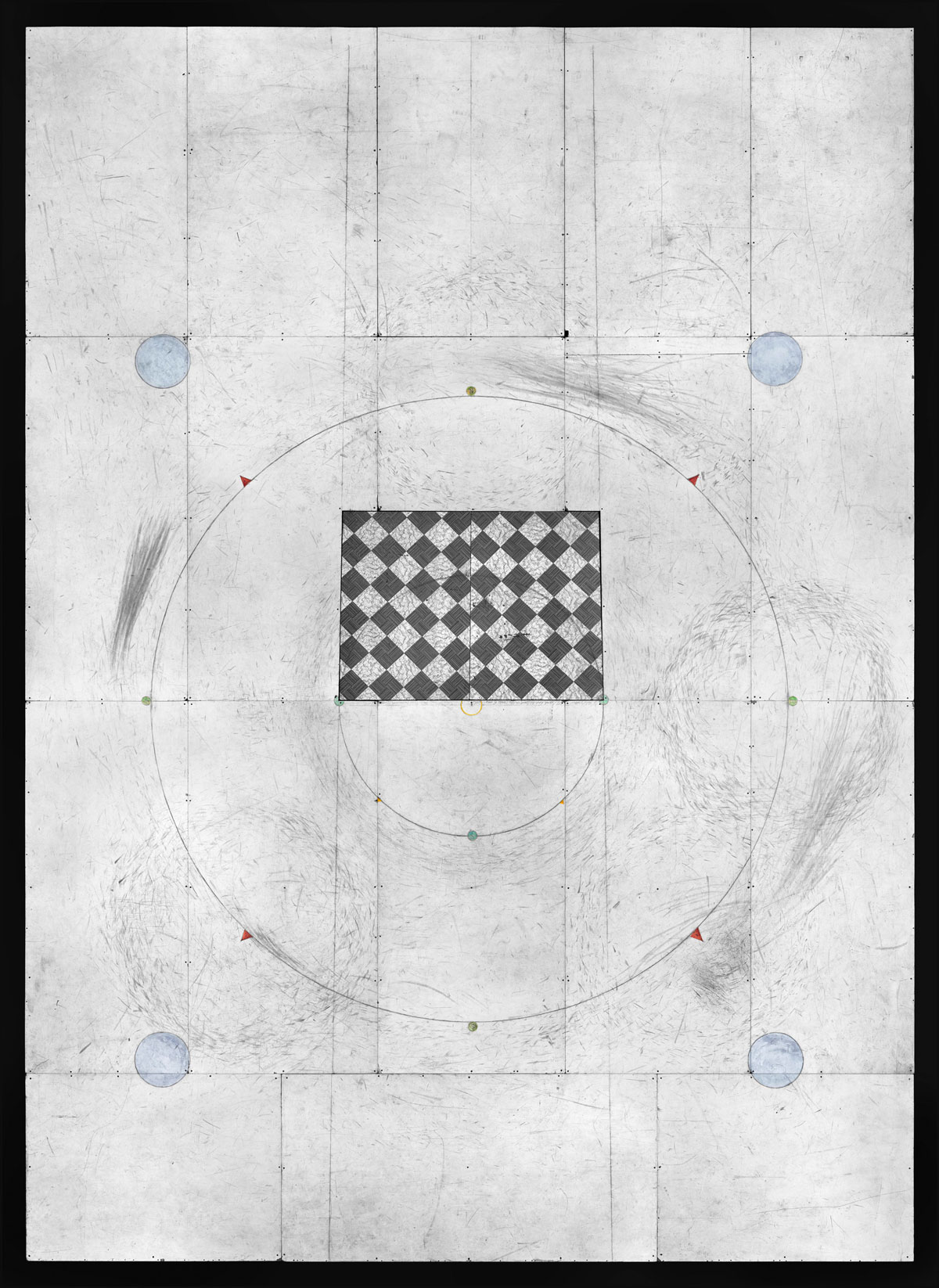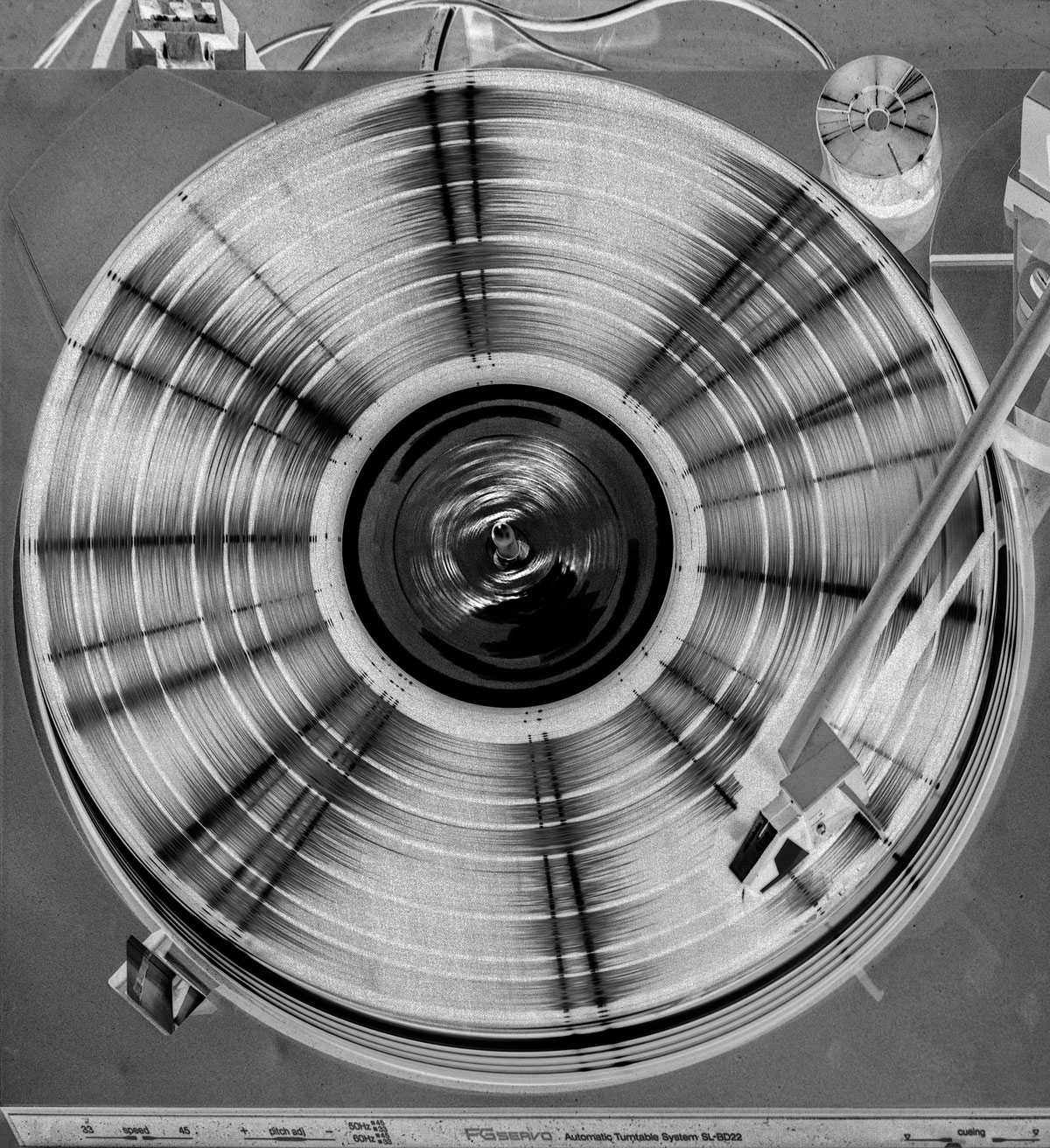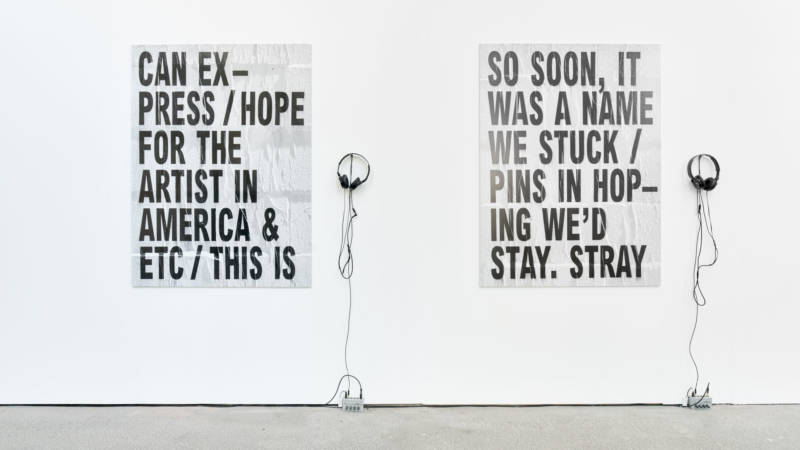Shannon Ebner‘s work is a moving target. Her concentrated, multivalent investigations of the relationship between language and photographic images consistently yield unpredictable outcomes. For STRAY: A GRAPHIC TONE, now on view at the Cantor Arts Center, Ebner digs into language that is both heard and seen, and in danger of slipping from our cultural dialogue.
If you’re like me and Ebner’s work is unfamiliar, you could relate it to the work of conceptual artists including Ed Ruscha, John Baldessari and the group Art & Language. Though Ebner rejects such a direct lineage, her idea-driven practice of pushing photography past its proscribed documentary function and into experimental territory situates her work proximally to that of her 1960s and 70s predecessors.
For Ebner, interrogating and deconstructing language visually—and for the current installation, aurally—is a fulsome endeavor. From that perspective, working with American poets Susan Howe and Nathaniel Mackey, both of whom are celebrated for blurring form and content lines in their chosen art form, is an obvious choice.

At the Cantor, the multimedia installation STRAY includes recordings of Howe and Mackey reading their work, complemented by sections of extracted, almost abstracted text hung on the wall. Ebner’s play with punctuation interrupts the flow of each poet’s work such that reading and listening to the same verse are utterly different experiences. Further into the gallery, side-by-side record players feature (the also-titled) STRAY: A GRAPHIC TONE, a full-length poetry album in which Howe and Mackey recite selections of their work produced between 1991 and 2018. The album, which Ebner produced, will be released through Fonograf Editions and digitally on Spotify on April 9.
In written or spoken form, words affect us. They can land a leaden punch, or slide like water off a duck’s back. Ebner’s (A.L.N.G.U.E.*F.X.P.S.R), from the project The Electric Comma Series explores language’s physical and psychological weight. The Electric Comma began as a 13-line poem, a series of self-imposed directives, and ended when Ebner photographed its final iteration, the progression from page to image complete. In a one-car garage in Los Angeles, Ebner arranged cinder blocks for each letter of the alphabet on wall-mounted pegs and then photographed them. The weight of the cinder blocks counterbalances the fleeting potential of the spoken or written word, as does the knowledge that Ebner hefted each of the blocks into place as the project progressed.

To some, Ebner’s work may read as remote or too conceptual. Many who stepped into the gallery on the day I visited appeared disinterested or unsure of how to approach the intimate installation. If I could impose myself, I would urge visitors to listen to Howe and Mackey recite their work for the under-appreciated cultural wonders that they are.



